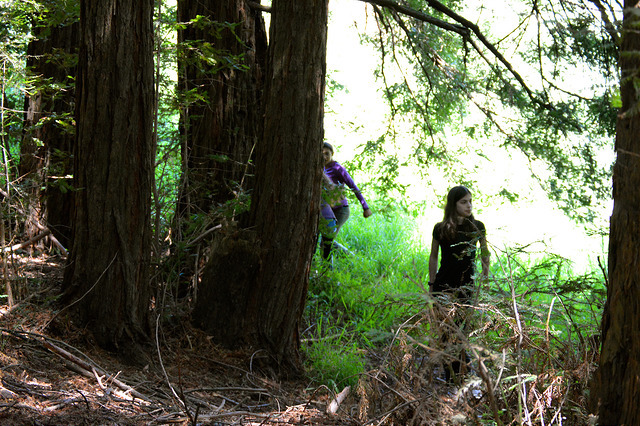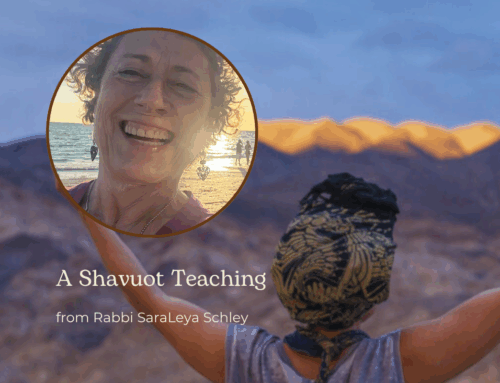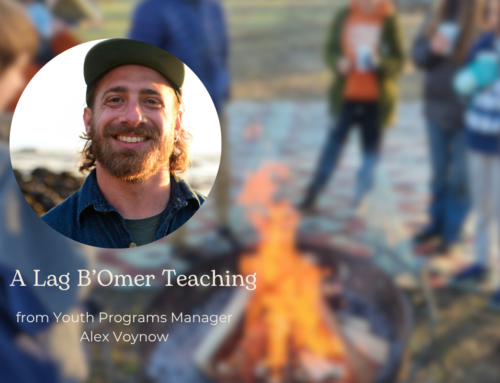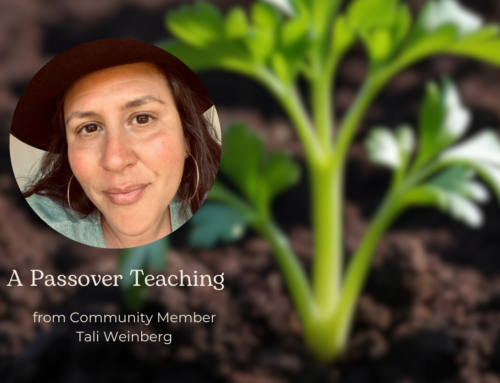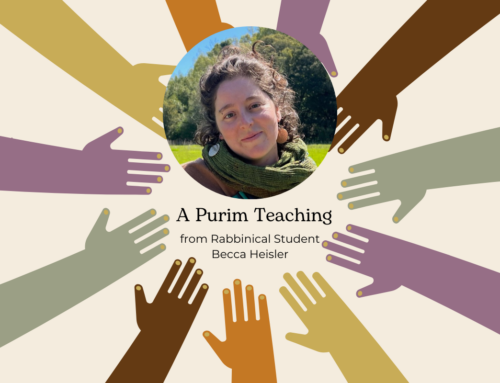by Maggid Zelig Golden & Sarai Shapiro
20 Sivan 5773 | May 29, 2013
“I experience B’naiture, as a parent, through the subtle changes in my daughter, and my relationship with her. It’s in the light that shines brighter after each session, the grace with which she carries herself, the quiet confidence with which she expresses her needs and desires, and the sincere gratitude with which she now approaches her life and family.” ~ B’naiture mother, 2013
The B’nai Mitzvah comes at the end of childhood when youth ideally begin to discover their unique gifts as they venture further and further from the safety of their parents’ nest. It is also a time when our youth are called upon to take more responsibility for themselves.
Today, youth face immense pressures away from the nest—in their peers, mass media, and academics—as they are learning how to make more and more choices for themselves. It is more important than ever that our youth are prepared with physical, psychological, and spiritual tools necessary for a safe passage into their teen years.
B’naiture, Wilderness Torah’s nature-based Bar/Bat Mitzvah program for 11–13 year olds, responds to this need by supporting youth on a two year journey into the wilderness to learn survival skills with their hands, experience the Hebrew calendar in tune with nature’s cycles, share their hearts around the fire, and receive support by a community of mentors and the wisdom of our Jewish traditions.
Since launching B’naiture three years ago, we are discovering that this work is truly transformative. We have witnessed our 13 year-old graduates return for their final rite of passage challenge—in many cases going an overnight solo to kindle and tend their own fire—with confidence and grace, faces glowing with a sense of accomplishment and connection, and carrying a deeper sense of pride in their ancestral heritage. Parents report that their children are more respectful, communicative, and helpful when they return home, as well as more excited to light Shabbat candles on Friday night.
Taking Kids to the Edge
The power of B’naiture lies in its return to an ancient formula—taking youth to the edge so they can discover their new, emerging self. Joseph Campbell masterfully describes the mythological “hero’s journey” on which each of us must embark to make the passage into our true adulthood. We must shed the old life that has become too small and go through an “ordeal” to claim our gifts and step onto this new path.
Exploring life’s edge and pushing boundaries epitomizes this time of transition. This is a time of differentiation from parents, whose primary role is to rear and protect their children. In healthy indigenous cultures throughout time, non-parental mentors would take youth away from their parents at this time—taking them to the edge in safe and healthy ways.
Without such support, modern teens unconsciously seek initiation through precarious behaviors such as high-risk sports, for example, and other less wholesome explorations of drugs, alcohol, and unsafe sexual activity. Parents today often find the transition from childhood to adolescence to be marked more by a descent into popular culture and peer pressure and are left feeling alienated as their loving, creative children become aloof, disconnected teenagers.
Unfortunately, the Bar/Bat Mitzvah fails to address these urgent needs that teens face today. While the current Bar and Bat Mitzvah certainly can provide a meaningful initiation into Judaism itself, preparing our children to perform the Saturday morning service and read from Torah, it is famous for failing to meet youth where they are in their own unique life.
At the Jewish Futures Conference in February, focused on the “Role of the Bar and Bat Mitzvah in America Today,” the conversation acknowledged the problems of focusing on the party, overemphasizing the ritual itself, and the dropout rate post-Bar Mitzvah.
Recent studies illuminate the angst felt in the room during the conference. Upwards of 60 percent of Jewish youth consider the Bar and Bat Mitzvah to be an end, rather than a beginning, of their Jewish journey, because it does not meet them personally. A Brandeis University study, “Being A Jewish Teenager in America: Trying to Make It,” concluded that Bar/Bat Mitzvah essentially fails to meet the real-world needs of adolescents, particularly in its failure to empower adolescents with more responsibility in their lives.
Furthermore, a study conducted by Jonathan Woocher, “Redesigning Jewish Education for the 21st Century,” concludes this must be remedied by creating “life-centered” experiences that are relevant to students’ lives, dealing with whole people and the full set of human concerns. It would be hubris, however, to believe that we need to reinvent such a life-centered approach.
Meet Youth Where They Are
BN12 abby and spoonTo the contrary, we need to look back to the conduct of indigenous cultures from across the world, which understood the need to meet each child where she is because they recognized that the transition from childhood into adolescence is one of the most precarious thresholds of a person’s life.
These cultures understood that to meet a child at the threshold of adolescence, we must give them tools and put them through relevant trials commensurate with the challenges of pending adulthood—only then would they survive and thrive in the face of their new adult lives. This not only benefits each child, but it ensures that the whole village will be resilient far into the future.
To answer the call for “life-centered” B’nai Mitzvah education, we at Wilderness Torah chose to design an experience that emulates this basic formula. We designed B’naiture using a few universal elements that are critical to supporting the transition into becoming a responsible, healthy teenager.
- The Wilderness
Judaism is an ancient, indigenous tradition. Our entire Torah narrative revolves around our experiences in the wilderness. Reconnecting to these ancient roots is essential. Take the story of Avram, for example, who was instructed to leave his family and go to himself. Avram’s story is the first archetypal rite of passage — leave home so you can find your own path. And where does Avram first go after leaving home? He first visits Alon Moreh, Hebrew for “teacher tree,” where he then receives his vision (Genesis 12:6).Moses learns of his mission while in the wilderness alone. Jacob receives his new name Israel during a wilderness solo of his own. Miriam encounters the well of water only after arriving in the wilderness. The Torah teaches us over and over that we find ourselves and our mission in the mirror of nature, and especially during this time when our youth spend more time on cell phones and in front of computers, it is critical to give them undistracted time to connect to what is real in the natural world.
- Edge Experiences
To grow out of being a child, one must take risks to test one’s own power and discover one’s own limits. Well-designed edge experiences provide opportunities to transcend one’s limited beliefs and discover new possibilities. The wilderness provides a perfect venue to push the edges of our youth through activities like a night swim in a cold pond, lighting and tending fire, sitting alone in nature, and traveling through the dark of night. - Mentorship
- It Takes a Village
- Honoring the Different Needs of Girls & Boys
Boys and girls enter into very different processes of physical and emotional transformation during this time. Having a safe space to explore the common changes and themes associated with their unique changes is a critical part of coming of age. While acknowledging and meeting the differences between the male and female journey, we provide similar skill building and challenge opportunities for both genders so as not to fall into outdated gender stereotypes.
Parents cannot be left to raise their children alone. Because the role of the parents is to raise and protect their children, they are not suited to push their children to the edge when this time comes. It is the role of other initiated adults in the community to take youth to the edge. Children thrive when adults they admire guide them into their tutelage and invite them on exciting, challenging experiences that awaken their innate curiosity and passions.
For a person to grow into their next developmental stage, they must be supported, guided, and witnessed by a community. The witnessing and reflection from others around them allows them to better see themselves and fully grow out of their old life and into a new life.
Embrace Ancient Wisdom
For thousands of years in other cultures the world over, these core elements have been used in rites of passage processes to move children into the next phase of their lives with self-awareness and confidence. While we have become accustomed to the modern American stereotype that teenagers are rebellious, have bad attitudes, and cannot be trusted, transitioning into the teen years does not have to be like this, nor has it always been this way.
As a Jewish community we are blessed to have our rite of passage still central to our culture and we have a golden opportunity to make it powerful and relevant for our youth today. B’naiture is Wilderness Torah’s answer to this need and it seems we’re onto something big. Young people look forward to returning to each B’naiture session and parents have been universally grateful for the positive transformation they witness in their children.
After his son returned from his final solo challenge, one B’naiture father recently commented, “He truly was a ‘city’ kid before he entered the program and the process he went through and his rising to challenges you posed him was something I never expected to see. Since he returned he is a different kid, more grounded, taking more initiative, and more aware of the world around him.”
Drawing from our ancient wellspring of Jewish teachings, and the lessons from indigenous cultures, B’naiture provides families like this a revolutionary new–old way to mentor our youth into a successful future.

